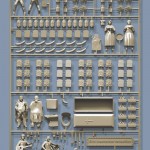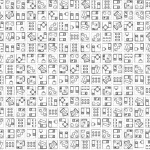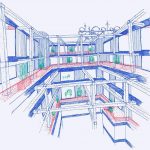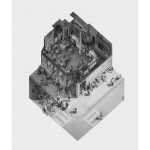Friedrich Froebel (1782-1852) was a German educator, considered as the inventor of the Kindergarten in 1837, at first named “Play and Activity Institute”. As one of the activities of the first kindergarten at Bad Blankenburg he introduced the Froebel play gifts, wooden toys composed of several prisms which can be combined together. The play gifts became a consistent part of the overall pedagogy carried at his kindergartens.

Froebel play gifts help a child discover the relationship between the whole and the single parts and imagine new meanings and forms starting from simple, non-figurative, elements. A kid begins to identify the potential of composing new forms through the continuous rearrangements of the basic units. The combination can always be dismantled and rethought, nothing is destroyed or permanently fixed in the world of Froebel play gifts. The gifts are able to materially demonstrate a series of concepts and of phenomenal experiences, from action, to unity, to complexity, to the relationship between space and objects.

Through the use of simple toys, kids begin instinctually to explore notions related to mathematics, geometry, architecture, engineering and art. The toys enhance a child’s interest in both knowledge and beauty which are considered as one.
The first gift designed by Friedrich Fröbel consists of eight cubes that can be assembled to obtain a bigger one. He later developed five other initial play gifts and many more over fifteen year, and explained their mode of use and meaning in the text The Sonntagsblatt (1838-1840).
Frank Lloyd Wright declared in his biography that the Froebel gifts had an everlasting impact on his way of perceiving the world and understanding form.
“These primary forms and figures were the secret of all effects (…) which were ever got into the architecture of the world”





Further reading:
Wilson, Stuart. “The ‘Gifts’ of Friedrich Froebel.” Journal of the Society of Architectural Historians, vol. 26, no. 4, 1967, pp. 238–241. JSTOR, www.jstor.org/stable/988449. Accessed 6 Mar. 2021.
Snider, Denton Jaques, The psychology of Froebel’s play-gifts, 1841-1925





Leave a Reply